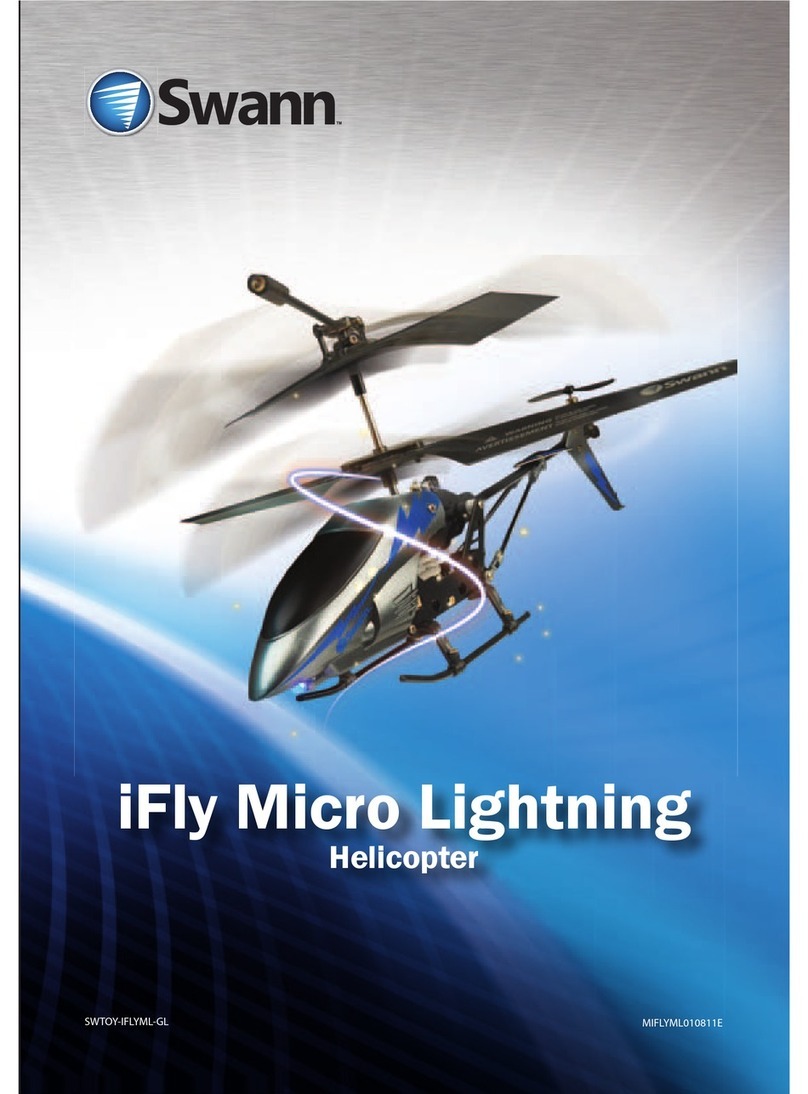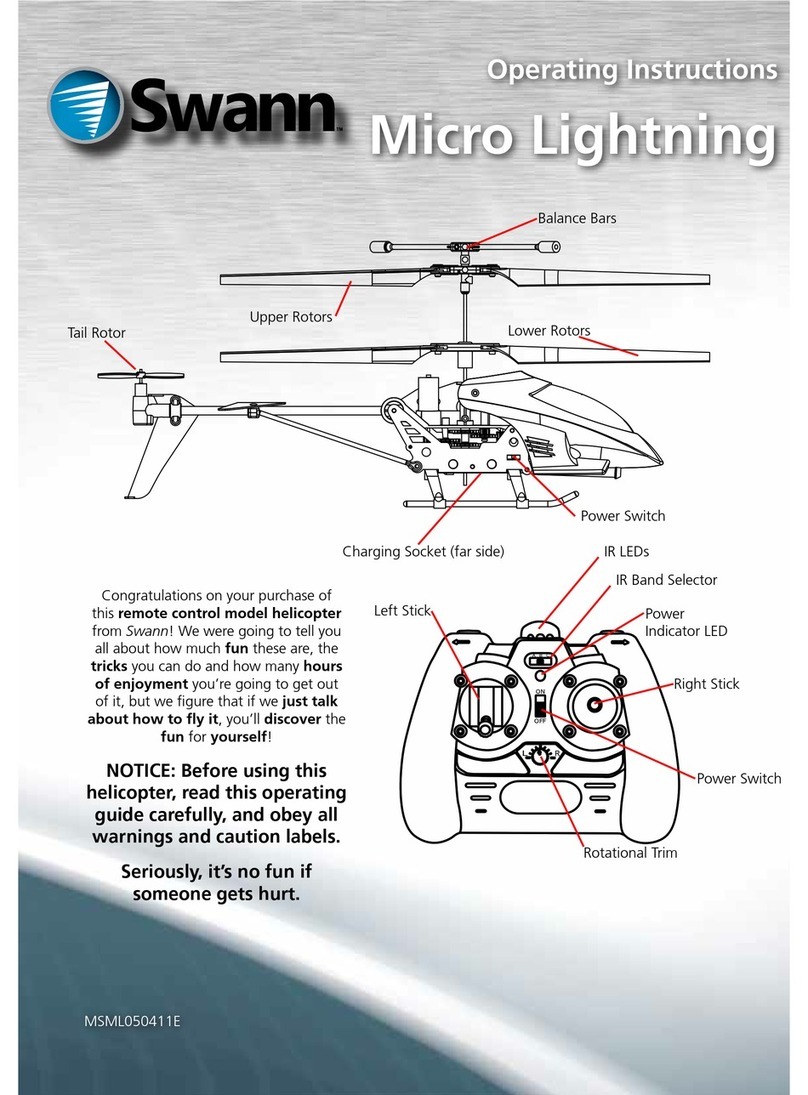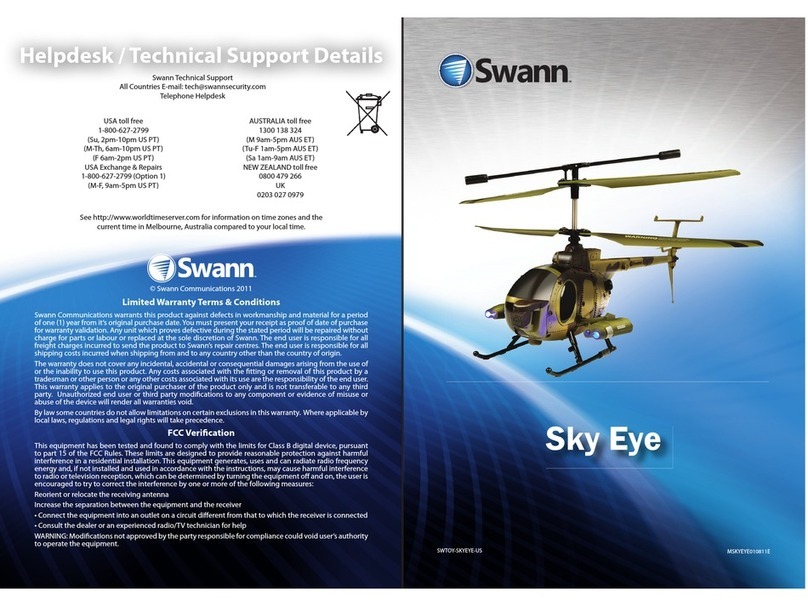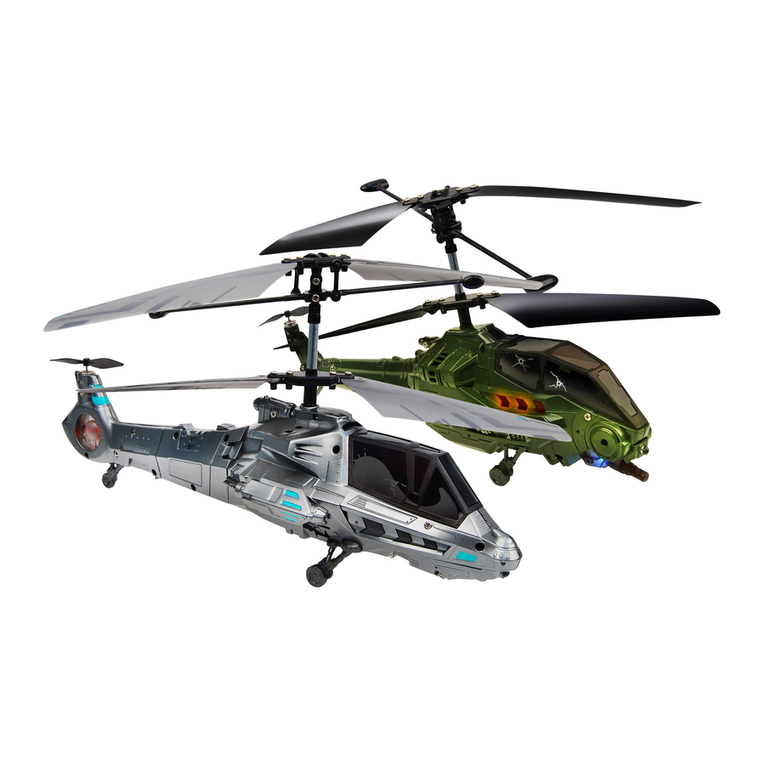
40
Estabilizada
¿Qué es la rotación estabilizada?
Puede descubrir que el helicóptero gira hacia la izquierda o la derecha mientras
está suspendido en el aire, incluso cuando no está utilizando la vara derecha del
controlador. Esta rotación se debe a que los dos conjuntos de aspas del motor en
ocasiones pierden la sincronización y necesitan que se ajuste la estabilización.
El control de estabilización se encuentra debajo de la vara de control de vuelo en el
controlador y ajusta la velocidad de las aspas giratorias para mantener el helicóptero
volando en sentido recto.
La estabilización debe ajustarse cada vez que eleva el helicóptero (y en ocasiones
durante el vuelo) para asegurarse de que el aparato vuele en sentido recto.
Mientras el helicóptero está
suspendido en el aire, si gira en el
sentido contrario a las agujas del reloj,
ajuste el control de estabilización hacia
la derecha hasta que el helicóptero
deje de desplazarse hacia la izquierda.
Si el helicóptero gira en el sentido de
las agujas del reloj, ajuste el control
de estabilización con suavidad hacia
la izquierda hasta que el helicóptero
deje de desplazarse hacia la derecha.
PRECAUCIÓN: No toque los rotores cuando están en
funcionamiento. No vuele sobre o cerca de la cabeza de
alguien. Se requiere la supervisión de un adulto todo el
tiempo.
Ajuste el control de ESTABILIZACIÓN
hacia la derecha...
Ajuste el control de ESTABILIZACIÓN
hacia la izquierda...
...si el helicóptero se desplaza en
el sentido de las agujas del reloj
...si el helicóptero se desplaza
en el sentido contrario
a las agujas del reloj
ADVERTENCIA: NO vuele cerca de los ojos o cara.
ESPAÑOL 9
Flight Tips
Wind: Basically, these are (approximately) 1/40th scale helicopters. Full sized
helicopters can’t y in high winds – and neither can the models. If a full sized
helicopter has diculty overcoming 50mph winds, then the model will have the
same diculty with 1~2 mph winds (i.e. 1/40th as much). There’s nothing that can be
done about this, it’s just physics.
Air conditioning: Hot air rises and cool air falls – this creates movement in the air,
leading to an eect called“wind shear”. Basically, this is when there’s a column of hot
air going up next to cold air going down. Many full-scale aircraft accidents have been
caused by wind shear. Air conditioners create heaps of wind shear. If the helicopter
ies through wind shear, it will seem to suddenly y up or down (depending on the
direction of the wind shear).
The Ground Eect: When the helicopter is near the ground, the air it pushes down
with its rotor has nowhere to go – the ground is in the way. Some of this air bounces
back, this pushes the helicopter up. When the helicopter is near the ground, it will
get slightly more lift than it normally would. This is something to keep in mind when
landing.
The Ceiling Eect: Conversely to the ground eect, when you y too close to a
ceiling, a small pocket of low pressure is created above the helicopter, and it will be
sucked upwards. This could be bad – if you hit the ceiling, the helicopter will stall, fall
and possibly be damaged.
Multiple Helicopters: If you’re using more than one helicopter in a space at once, be
very careful when setting the controller band and pairing them to the helicopters.You
may nd that the more than one helicopter will be controlled by a single controller,
and this can lead to crashes, accidents, injuries or other very undesirable outcomes.
Places to Fly: Because high winds can be a problem, we recommend ying indoors.
However, you really do need a bit of space to get the most out of the helicopter.
Some places which are good for ight include large garages (whilst the car’s not
parked there), indoor sports areas, aircraft hangars, secret underground submarine
pens and so on (though why you’d y a toy helicopter in your secret underground
submarine pen is beyond us). Or a large lounge room with delicate items stashed
somewhere out of the way - whatever you’ve got.
Low Battery: To get the longest possible life from the built-in battery, never
completely discharge it. As soon as the helicopter shows any sign of running low on
power (such as responding slowly or being unable to maintain altitude easily) turn it
o and charge it as soon as practicable. For more information about battery care, see
“Helicopter Battery Warnings” on page 13.
ENGLISH




































